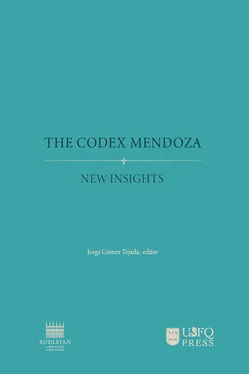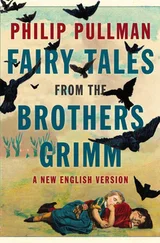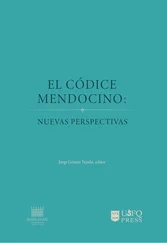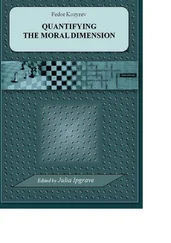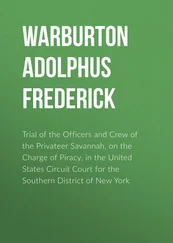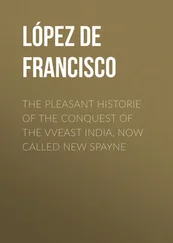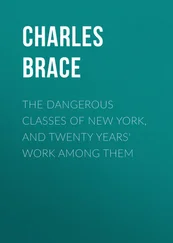

USFQ PRESS
Universidad San Francisco de Quito USFQ, Quito 170901, Ecuador.
https://usfqpress.com
We are the publishing house of the Universidad San Francisco de Quito USFQ. We further the mission of the university by disseminating knowledge to train, educate, research and serve the community within the philosophy of the Liberal Arts.
The Codex Mendoza: new insights
Authors: Jorge Gómez Tejada1, Davide Domenici2, Chiara Grazia3, David Buti4, Laura Cartechini5, Francesca Rosi5, Francesca Gabrieli5, Virginia María Lladó-Buisán6, Aldo Romani3, Antonio Sgamellotti7, Constanza Miliani8, B. C. Barker-Benfield6, Diana Magaloni9, Mary Ellen Miller10, Claudia Brittenham11, Frances F. Berdan12, Barbara E. Mundy13, Daniela Bleichmar14, Todd P. Olson15, Carmen Fernández-Salvador1, Joanne Harwood16, Lucien Sun11
1Universidad San Francisco de Quito USFQ, Quito, Ecuador; 2Dipartimento di Storia Culture Civilt , Universit di Bologna, Italy; 3Centro di Eccellenza SMAArt (Scientific Methodologies applied to Archaeology and Art), Dipartimento di Chimica, Biologia e Biotecnologie, Universit di Perugia, Italy; 4CNR-ISPC (Istituto di Scienze del Patrimonio Culturale), Florence, Italy; 5CNR–SCITEC (Istituto di Scienze e Tecnologie Chimiche "Giulio Natta"), Perugia, Italy; 6Head of Conservation & Collection Care, The Bodleian Libraries, University of Oxford, United States of America; 7Accademia dei Lincei, Roma, Italia; 8CNR-ISPC (Istituto di Scienze del Patrimonio Culturale), Naples, Italy; 9Los Angeles County Museum of Art/Universidad Nacional Autónoma de México; 10Getty Research Institute, United States of America; 11University of Chicago, Illinois, United States of America; 12University of California, San Bernardino, United States of America; 13Tulane University, New Orleans, United States of America; 14University of Southern California, Los Angeles, United States of America; 15University of California, Berkeley, United States of America; 16Independent researcher
This work is published after a blind peer-review process.
Book editor: Jorge Gómez Tejada
Publishing production: Andrea Naranjo
Design and layout: Ricardo Vásquez
Cover design: Ricardo Vásquez
Text editing: Caley Mikesell
Prepress: Ricardo Vásquez
© Jorge Gómez Tejada, Davide Domenici, Chiara Grazia, David Buti, Laura Cartechini, Francesca Rosi, Francesca Gabrieli, Virginia María Lladó-Buisán, Aldo Romani, Antonio Sgamellotti, Constanza Miliani, B. C. Barker-Benfield, Diana Magaloni, Mary Ellen Miller, Claudia Brittenham, Frances F. Berdan, Barbara E. Mundy, Daniela Bleichmar, Todd P. Olson, Carmen Fernández-Salvador, Joanne Harwood, Lucien Sun, 2022
© Universidad San Francisco de Quito USFQ, 2022
© Richard Ovenden, del Prefacio, 2022
All rights reserved. The total or partial reproduction of this work is not permitted, nor its incorporation into a computer system, nor its transmission in any form or by any means (including electronic, mechanical, photocopying, recording or others) without the prior written authorization of the owners of the copyright. The infringement of said rights may constitute a crime against intellectual property.
ISBN: 978-9978-68-207-4
Author record: UIO-061031
First edition: February, 2022
Cataloging at the source Library of the Universidad San Francisco de Quito USFQ.
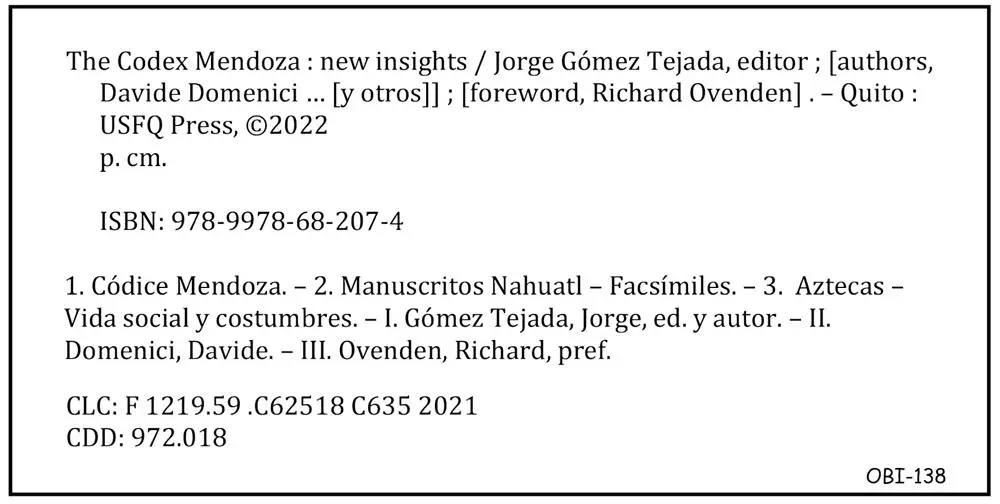
It is suggested to cite this work as follows:
Gómez Tejada, J. (Ed.) (2022). The Codex Mendoza: new insights. USFQ PRESS.
The use of general descriptive names, trade names, trademarks, etc., in this publication does not imply, even in the absence of a specific statement, that these names are exempt from relevant protective laws and regulations and therefore free for use. general use.
The information presented in this book is the sole responsibility of its authors. USFQ PRESS presumes that the information is true and accurate as of the date of publication. Neither USFQ PRESS nor the authors give any warranty, express or implied, regarding the materials contained in this document or any errors or omissions that may have been made.
Foreword

Since its moment of origin, Codex Mendoza has been a document of the utmost international significance, as reflected by its early travels. Its European paper must have crossed the Atlantic twice, there and back in quick succession by the early 1540s. On the manuscript’s last folio, its Spanish commentator states that the manuscript remained in Mexico less than ten days after completion, before the fleet was due to sail. After a period in Renaissance France, it came to rest in Oxford and has been kept safe here at the Bodleian Library for over 350 years.
Codex Mendoza embodies an overwhelming tragedy: the dissolution of a civilization. Yet, it also crystallizes and almost celebrates the culture of that civilization by recording and interpreting not only its history, geography (through tax returns), and everyday life, but also its art, language, and pictographic writing. All this is keyed as if to facilitate wider understanding in a European language.
Even before it was gifted to the Bodleian Library by John Selden’s executors around 1659, the manuscript’s intellectual content had been available for wider study through a set of woodcut images in the third volume of Purchas his Pilgrimes (Purchas 1625). Codex Mendoza took pride of place in 1831 as the first item to be fully printed in color in the first volume of the Antiquities of Mexico, reproduced by Lord Kingsborough in lithographic facsimile. That publication, like successive photographic facsimiles of the twentieth century, proved to be too costly for wider circulation. However, in just the last few years, digital technology has enabled the reproduction of the pages of the Codex Mendoza online as well as closer study of its colors through non-destructive instrumental analysis and multispectral photography.
As such, it is with the greatest pleasure that I welcome this new color facsimile of the Codex Mendoza, published in Ecuador with wide-ranging contributions by scholars from Latin America, the United States, and Europe. This publication meets the aim of the Bodleian Libraries of the University of Oxford to make this manuscript and all of its unique features available to be more extensively studied throughout the world.
Richard Ovenden
Bodley’s Librarian
Contents

FOREWORD Foreword Since its moment of origin, Codex Mendoza has been a document of the utmost international significance, as reflected by its early travels. Its European paper must have crossed the Atlantic twice, there and back in quick succession by the early 1540s. On the manuscript’s last folio, its Spanish commentator states that the manuscript remained in Mexico less than ten days after completion, before the fleet was due to sail.
Читать дальше
